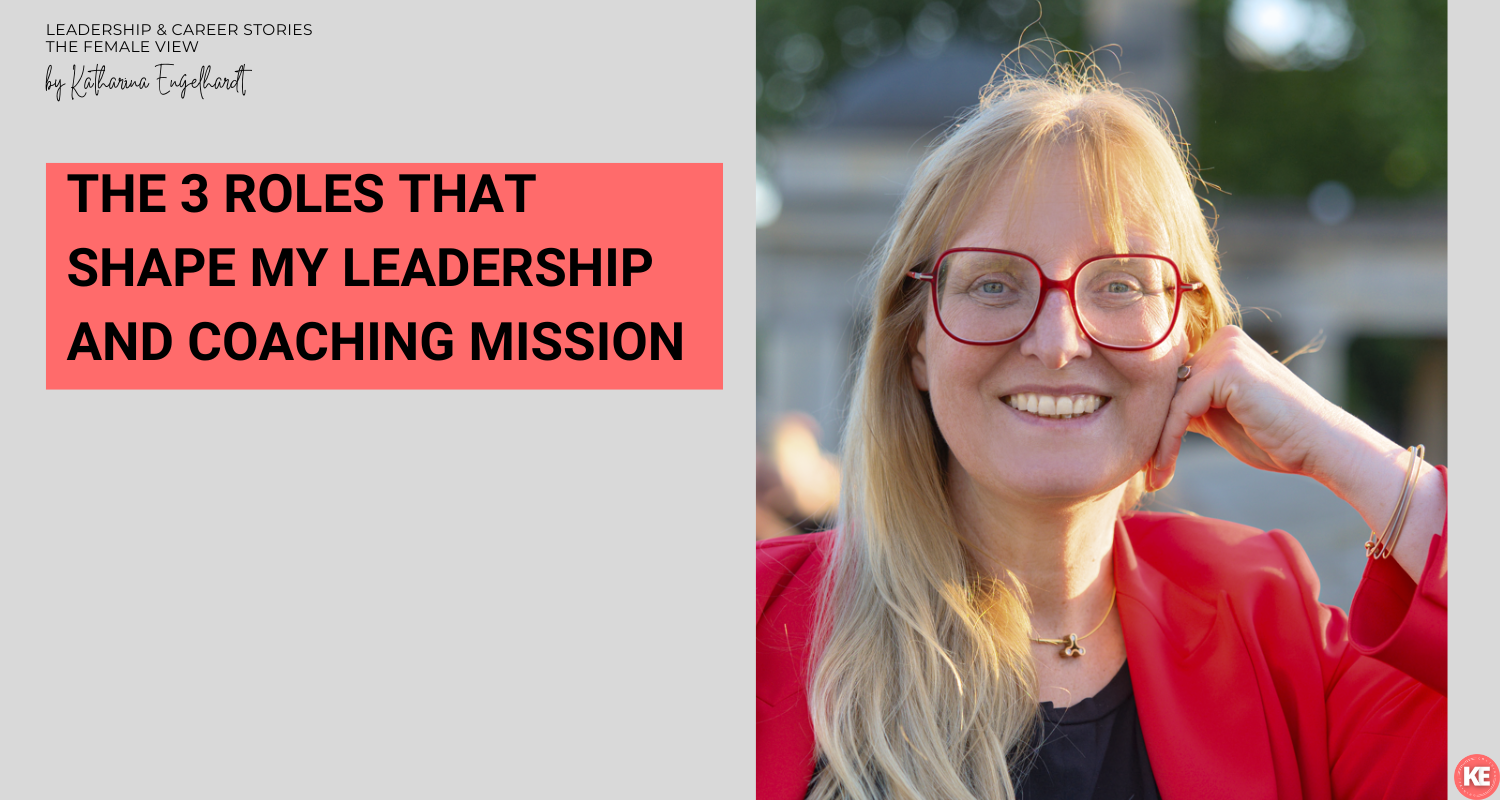3 Challenges of women to get into leadership roles and how to overcome them
"We don't find the women, the women don't exist" - How often do we hear this falsely over and over again, even in 2022.
A fitting quote from Marcel Proust: "It is not a matter of seeking new landscapes, but of seeing with new eyes".
With global disruption at an all-time high, it’s critical that organizations prepare their female leaders to navigate challenges successfully. For some organizations, these challenges included building a female leadership pipeline, driving innovation to keep pace with demand, and managing disruptive forces in their sector and the economy. Organizations need to specifically mentor and coach women to ensure that the talent pipeline if filled.
Performance and Potential
Regardless of their functional areas of expertise, women who aspire to senior leadership need to achieve significant accomplishments. These accomplishments need to demonstrate their mastery of both hard and soft skills and their ability to make meaningful and indispensable contributions to organizational success. While strong candidates for any position will have many accomplishments, it’s important for women targeting senior leadership to have a few accomplishments that stand out due to their greater impact. Those accomplishments with the highest impact create a pattern of success that women, their supporters and sponsors can use to tell the story of their past successes and paint a picture of their future potential.
Such career-defining accomplishments have three components that demonstrate:
Mastery of hard skills such as revenue generation, expense reduction, business modeling, financial acumen, risk management, customer and employee retention as well as market knowledge, strategic and global awareness
Mastery of soft skills, also known as emotional intelligence, such as empowering others, goal setting and management, change management, negotiation, thought leadership, inclusive leadership and influential and consensus-building communication style
Delivery of quantifiable business impact, in both areas above, and in areas specific to their work, quantifiable proof that the business under their watch improved and exceeded expectations
To meaningfully help women rise to their leadership potential, they and their sponsors must focus on their potential and, as is done with men more readily, use past successes and accomplishments as proof of why an organization should give them greater leadership responsibility and opportunity to realize that potential. Women who focus on their own potential, learning to speak about it with confidence and conviction, help others envision them succeeding at higher levels.
Mindset
Anyone targeting the highest levels of leadership and influence must move beyond the basic threshold of business acumen into an “executive mindset.” This mindset includes the ability to think and act strategically, with a well-developed understanding of how the entire business succeeds rather than simply understanding the dynamics of one’s own discipline. It requires the ability to get above the details of a particular situation and see those details in the larger and more strategic context. While this is an exercise in learning to understand and operate both in the weeds of specific types of problems, and in the treetops of how issues come together strategically to create opportunities and threats, the ability to switch effectively between these perspectives and operate effectively in both is a skill unto itself. It is a skill that someone who has an executive mindset recognizes to help them determine whether a weeds or treetop view is appropriate in any particular situation.
Many women struggle to understand and cultivate an executive mindset because they are not effectively mentored or coached into it, particularly by other senior women who did not receive such mentoring. Men, on the other hand, through role modeling, informal mentoring and more direct development through broadening assignments, are more likely to be supported in developing their executive mindset by other male leaders.
In fact, many women are mentored and coached early in their career towards behaviors and mindsets that are the exact opposite of the executive mindset. They are rewarded for getting the details right, and they are penalized for taking strategic risks and claiming responsibility for their own successes in ways many men are not. Women are told they must work twice as hard as men and that their hard work will be recognized and rewarded. Thus, most women believe that their success will result from hard work, an attention to detail and extreme humility. Unfortunately, these are not characteristics, by themselves, that describe successful executives who can break away from the details to see strategic possibility, manage their workload in realistic comparison to their priorities and demonstrate confidence amidst risk.
Mentors and allies who wish to help women develop their executive mindset are advised to help them earlier in their career to:
Learn how cultivating both a “weeds” and “treetops” level perspective can help them lead and manage better
Manage their workload realistically against true business priorities
Balance humility with a healthy ability to self-advocate
View confidence as a skill helpful in motivating others and mitigating risk
SHOW UP!
While executive sponsors often spot talent based on good business results, they also pay attention to those leaders who influence other leaders with good ideas. Even so, every woman in business frequently experiences having their ideas ignored, only to be taken up a few moments later and presented by a man as though they were his own. When this happens consistently, which it does in most business cultures, women come to believe their ideas have less value, because the ideas originate from them. This is demotivating for women and unconsciously discourages them from speaking up and valuing their own ideas.
Mentoring women into leading with their ideas is good for the women, good for the business. Moreover, it also gives women greater access to discussions and forums where ideas brew and leaders with potential get noticed. This is especially true at conferences, retreats and executive roundtables, both public and private. It should come as no surprise that the majority of virtually every conference speaker’s list will be made up by men. This is a result of both unconscious bias and women self-selecting out of discussions where the impact of their ideas will gain visibility.
By contrast, when a woman learns to believe in the value of her ideas, to invest herself in developing them and standing for them, she can become influential and gain visibility. Even more powerful, she can shape her ideas, the way she advocates for them and the audience to whom she speaks to help her achieve an intentional personal brand and become known for her potential to lead through the power of ideas. Mentors and allies hoping to support and help women tap their potential for thought leadership can start by:
Asking women for their ideas and listening sincerely to their responses
Telling women what they find appealing about the idea(s) they’ve pitched
Challenging women’s ideas for the purpose of helping them develop them (rather than “winning” with a better idea)
Giving women credit for their good ideas and sharing specifically how those ideas advance the discussion
Suggesting to others that they talk to specific women whose ideas could be helpful and facilitating these connections
Such simple measures help women value their own ideas and understand the ways their ideas contribute to the business, while also giving women visibility in the flow of ideas.
Action Steps
In the years I've been mentoring and coaching women on their leadership journey I've been collecting insights, new ideas and ways to bust the myths we all hear about women and leadership.
You've been wanting to change your leadership behavior for a long time, but just can't manage it? No wonder...... such a personal change is truly not easy. WHY?
Because a change always means leaving your comfort zone and setting out on the path through:
· the fear zone
· the learning zone
· the growth zone and
· the experimentation zone, before you make it and finally reach the transformation zone.
In my coaching sessions I often find that it can be helpful to be aware of this.
To become aware of which zone you are in at the moment.
And to be aware of the steps you have already taken.
Having a sparring partner or a coach by your side helps you to get
· the necessary support,
· the necessary commitment to keep at it, and
· above all the necessary skills (in a very efficient way!) to reach the goal more quickly and calmly.
>> WHICH ZONES DO YOU FIND MOST DIFFICULT TO ACHIEVE AND OVERCOME? As a career and leadership coach, I can support you in breaking through your personal glass ceiling.
In my coaching I can support you individually to find your vision and to create your vision board. If you have any further questions, just drop me a line anytime.
Here is the link to book a discovery call. My program SHOW UP! can help you with the preparation phase.
Pin this graphic if you liked the post.





